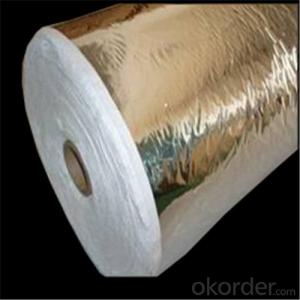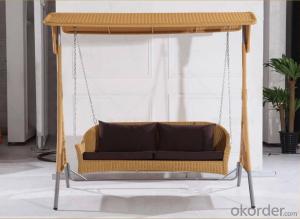Wraith Aluminum Skid Plate
Wraith Aluminum Skid Plate Related Searches
Led Light Bulbs For Ceiling Fixtures Led Lamps For Ceiling 42 In Ceiling Fan With Light Aluminum Coil Stock For Gutters Aluminum Foil For The Grill Hole Saw For Aluminum Plate Aluminum Tread Plate For Trailer Bow Plate For Aluminum Boat Aluminum Foil For Grow Room Aluminum Foil For Joint PainHot Searches
Stock Price For Aluminum Aluminum Coil Stock For Sale Aluminum Gutter Coil For Sale Used Aluminum Scaffolding For Sale 1/4 Aluminum Plate For Sale Aluminum Bar Stock For Sale Aluminum Round Stock For Sale Aluminum Diamond Plate For Sale Aluminum Scaffolding For Sale Craigslist 6061 Aluminum Plate For Sale Aluminum Dock Plate For Sale 7075 Aluminum Plate For Sale Aluminum Tread Plate For Sale Aluminum Checker Plate For Sale Aluminum Plate For Sale Near Me Plate Aluminum For Sale Aluminum Plate For Sale Aluminum Square Stock For Sale Aluminum Flat Stock For Sale Billet Aluminum Stock For SaleWraith Aluminum Skid Plate Supplier & Manufacturer from China
Okorder.com is a professional Wraith Aluminum Skid Plate supplier & manufacturer, offers integrated one-stop services including real-time quoting and online cargo tracking. We are funded by CNBM Group, a Fortune 500 enterprise and the largest Wraith Aluminum Skid Plate firm in China.Hot Products
FAQ
- Certainly, aluminum sheets can serve as a viable substitute for wood in specific applications. Aluminum boasts numerous advantages over wood, rendering it a favored choice across various industries. Primarily, aluminum exhibits exceptional durability and longevity due to its resistance to corrosion, rot, and pests. Consequently, it proves ideal for outdoor usage or areas with high moisture levels. Moreover, aluminum sheets are lightweight, facilitating easier handling and transportation in comparison to wood. Additionally, they possess a commendable strength-to-weight ratio, enabling them to withstand heavy loads while maintaining their structural integrity. Moreover, aluminum stands as a sustainable material, capable of indefinite recycling without compromising its properties. Conversely, wood necessitates the felling of trees, thereby carrying environmental implications. Aluminum sheets also offer a high degree of design flexibility, readily assuming complex structures through shaping, bending, and forming. This adaptability allows for innovative and creative applications. Furthermore, aluminum exhibits excellent thermal and electrical conductivity, rendering it suitable for scenarios where heat dissipation or electrical conductivity plays a crucial role. Nonetheless, it is crucial to acknowledge that wood retains its unique characteristics and benefits in certain applications. Wood imparts a warm and natural aesthetic that aluminum fails to replicate, making it a preferred choice in interior design or furniture manufacturing. Additionally, wood qualifies as a renewable resource and exhibits excellent insulation properties, proving advantageous in construction or insulation applications. Consequently, while aluminum sheets can serve as a fantastic substitute for wood in numerous instances, the ultimate choice hinges upon the specific requirements and desired outcomes of the application at hand.
- Aluminum sheets have excellent corrosion resistance. Aluminum naturally forms a protective oxide layer on its surface when exposed to oxygen, which acts as a barrier against corrosion. This oxide layer is very stable and prevents further oxidation of the metal, making aluminum highly resistant to corrosion in most environments. Additionally, aluminum sheets can be further enhanced with surface treatments or coatings to increase their corrosion resistance even more. This makes aluminum sheets a popular choice for various applications where corrosion resistance is crucial, such as in the construction industry, automotive manufacturing, and marine applications.
- why can't aluminum sheet burn after polishing?
- because aluminum will rapidly formulate dense oxide film once being exposed in air, oxide film will generate after polishing, it can't burn.
- I broke the swing-arm of a cut-off saw, need to know how to weld it back. I have a stick welder and can weld steel, but have never messed with cast aluminum.
- Let me guess. is your saw made by Chicago Electric by chance? I work as a welder and I tried to fix one of those retarded things a customer brought in, about a year back. The real problem here is a faulty design. Plain and simple. The metal used to make the part is extremely cheap. If you had it welded it would probably cost a bit on labor, and furthermore it's very likely to just break again in the future. See if you can find a used saw made by a name brand, like Milwakee, Delta, or Makita. If it's a tool you use often, then you'll save money in the long run, trust me.
- Anodized aluminum sheets have several distinct properties that make them highly desirable for various applications. Firstly, anodized aluminum sheets have a protective oxide layer on their surface, which enhances their corrosion resistance. This oxide layer is formed through an electrochemical process called anodization, where the aluminum sheet is treated with an electric current in an acid electrolyte solution. This protective layer makes anodized aluminum sheets more durable and capable of withstanding harsh environments, which makes them suitable for outdoor applications. Another notable property of anodized aluminum sheets is their enhanced scratch resistance. The anodization process not only creates a protective layer but also hardens the surface of the aluminum, making it more resistant to scratches and wear. This property is particularly advantageous in applications where the aluminum sheets are subjected to frequent handling or abrasive conditions. Furthermore, anodized aluminum sheets can be produced in a wide range of colors. The anodization process allows for the integration of dyes or pigments into the oxide layer, resulting in a variety of vibrant color options. This property makes anodized aluminum sheets popular in architectural and decorative applications, as they can be customized to match specific design requirements. Additionally, anodized aluminum sheets have excellent thermal and electrical conductivity. The process of anodization does not significantly affect these inherent properties of aluminum. Therefore, anodized aluminum sheets can efficiently dissipate heat and conduct electricity, making them suitable for applications such as heat sinks, electronic enclosures, and electrical components. In summary, the properties of anodized aluminum sheets include enhanced corrosion resistance, improved scratch resistance, a wide range of color options, and excellent thermal and electrical conductivity. These properties make anodized aluminum sheets a versatile and durable material for various industries and applications.
- I had this mandarin orange can. I filled the can with water. Four days later, there are quarter inch thick rust cakes on the inside of the can. Since I assume the can is aluminum, are these cakes aluminum oxide? If so, is it flammable and/or dangerous?
- Aluminum oxide is white and powdery in texture. It also takes a bit longer for aluminum to oxidize than iron, so I don't think you could have cakes of aluminum oxide in 4 days. If the cakes you are describing are reddish in color, then no, it is NOT aluminum oxide. It is good old fashioned ferric oxide- rust from iron.
- Using aluminum sheets in different applications offers several weight-saving benefits. Firstly, aluminum is a lightweight material, making it ideal for applications where weight reduction is crucial, such as in transportation industries (e.g., automotive, aerospace). Secondly, its high strength-to-weight ratio allows for the production of structurally sound components without compromising on weight. This weight reduction translates into improved fuel efficiency, increased payload capacity, and enhanced overall performance. Additionally, aluminum sheets are corrosion-resistant, ensuring durability and longevity. Overall, the use of aluminum sheets in various applications provides significant weight savings, leading to improved efficiency and performance.














































